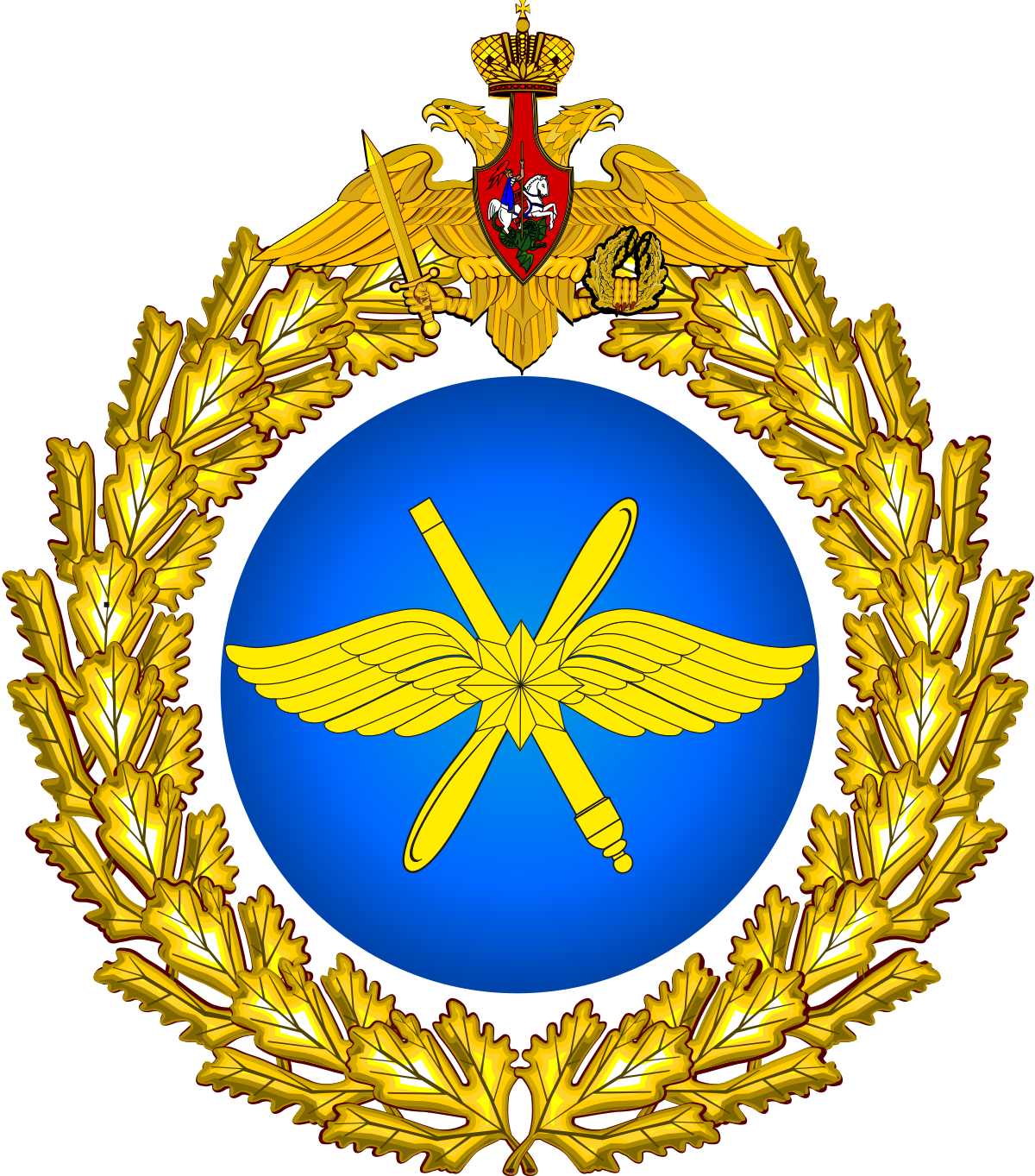By recommendation of the Russian Ministry of Defense, on August 1, 2015, the Russian Air Force and the Russian Aerospace Defense Forces were combined to create the Russian Aerospace Forces (VKS). The VKS was created to optimize the command and control of aircraft and missiles in the Russian battlespace under a single authority. The VKS contains three subcommands: The Air Force, Space Force, and Air and Missile Defense Forces. Due to classification restrictions, the deception technologies and tactics, techniques, and procedures (TTP) will not be discussed in this analysis. In 2017, the total number of Russian troops serving in the VKS was 148,000, including conscripts. However, since the 2022 Russian invasion of Ukraine, that number has most likely increased.
The VKS, headquartered in Moscow, contains five Air Force Air Defense Armies (AFADAs), with both Air Force and Air and Missile Defense Forces units subordinate to them. These AFADAs are spread amongst the Joint Strategic Commands (OSKs) that replaced the traditional military district constructs in 2009. Their area of operation regionally defines these OSKs, sometimes referred to as the Eastern, Northern, Southern, Central, and Western OSKs, a carryover from the long-dubbed military districts.
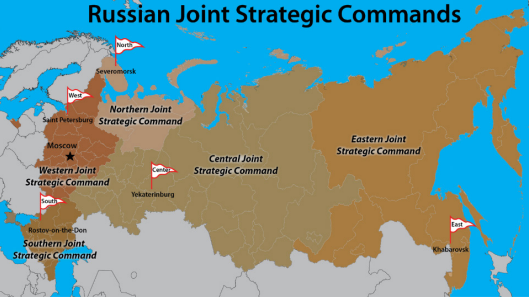
The AFADA subordinate Air Forces comprise all fixed-wing and some rotary-wing assets. However, the Long Range Aviation (LRA) and the Military Transport Aviation (VTA) departments, while subordinate to the VKS, do not fall under the OSKs. Instead, these high-value aircraft are deployed from their parent commands to support the combat operations of the OSKs. The Air and Missile Defense Forces units contain the strategic and tactical surface-to-air (SAM) batteries charged with the air defense of their assigned areas. These SAM units are charged with destroying enemy aircraft and precision-guided munitions (PGMs). Together, these Air Forces and Air and Missile Defense Forces units share a common air picture and serve to achieve air dominance in order to support the Russian Ground Forces.
Current Status
On February 24, 2022, the Russian invasion of Ukraine was spearheaded by the VKS, which flew hundreds of tactical aircraft (TACAIR) and LRA sorties in an attempt to achieve adequate suppression of enemy air defenses (SEAD) on the Ukrainian Armed Forces (UAF). As of this analysis, the conflict is still raging at eight months with no sign of slowing down. The VKS has destroyed thousands of Ukrainian targets ranging from Ukrainian ground troops, aviation assets, naval assets, and civilian infrastructure. However, the strains of sustained combat operations and sanctions are beginning to show with the supply of advanced air defense systems to Ukraine from the United States and other NATO allies. Since September 2022, at least six high-profile non-combat-related aviation mishaps have signaled a decrease in pilot and aircraft readiness.
Primary Adversary
The Soviet, now Russian, Aerospace Forces have been designed and maintained with a primary mission in mind, countering U.S. air power, which has been the center of gravity for U.S. forces since World War II. The Air and Missile Defense Forces have been specially molded with the U.S. in mind, resulting in the development, employment, and global proliferation of several advanced families of SAMs. While the U.S. has invested billions in low observable (stealth) aircraft, hypersonic missiles, and Group V unmanned combat aerial vehicles (UCAVs), the Russian Federation, unable to match American innovation and production models, has developed systems like the S-400 and S-500 family of SAMs. The Russian Federation claims these systems can intercept these American systems. This ability to defend against American air power has also led to the sale of these systems to dozens of international buyers, including Iran, China, India, Algeria, and many others.
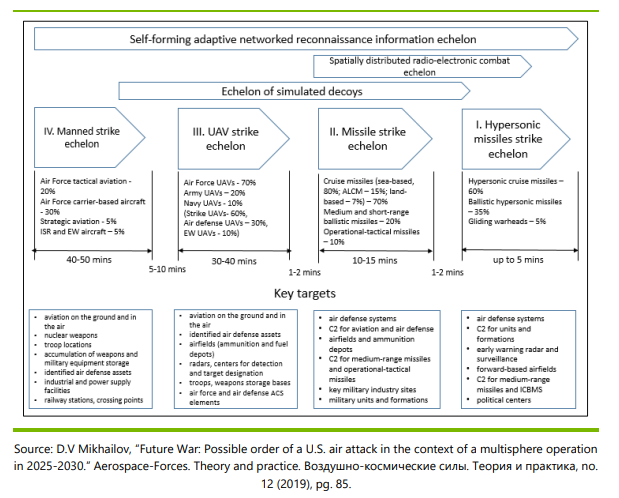
Deception Efforts
Deception is written into political and military doctrine at every level inside the Russian Armed Forces. Maskirovka, meaning disguise, is the guiding principle in which Russian military forces seek to offset adversary advantages. The Rand Corporation defines it as the concealment of forces and intentions and the use of decoys and deception to misdirect the adversary (Boston, 2017). Charles Smith, an American researcher, categorized Maskirovka into five categories: sokrytiye (concealment), imitatsiya (imitation), simulyatsiya (simulation), dezinformatsiya (disinformation), and Demonstrativnyye manevry (demonstrative maneuvers). The VKS primarily engages in imitation and concealment, fielding some of the most advanced decoys in the world. However, it is essential to note that any combat employment of VKS assets is usually preceded by a massive white, grey, and black propaganda campaign, coordinated through the highest echelons of the Ministry of Defense and the Foreign Ministry, which would include the other facets of Maskirovka.
Within the VKS, the Air Forces employ several rudimentary inflatable decoys through the company Rusbal. Originally a hot air balloon manufacturer, the company began manufacturing a wide array of inflatable decoys that mirror the appearance of tactical aircraft ranging from the Su-25 to the Su-35.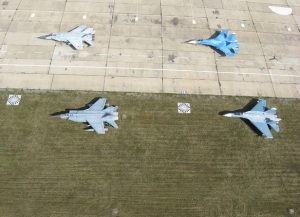 These inflatable aircraft are deployed at many Russian VKS bases and rotate fairly constantly to disguise the actual number of operational aircraft. These decoys were used extensively during the April 2021 buildup along the Ukrainian border, in which Russian airfields in the Western OSK seemed to expand their inventory of operational aircraft overnight. However, military bloggers debunked many of those decoys using commercially available synthetic aperture radar (SAR), which can discern between decoys and the solid metallic surfaces of Russian aircraft.
These inflatable aircraft are deployed at many Russian VKS bases and rotate fairly constantly to disguise the actual number of operational aircraft. These decoys were used extensively during the April 2021 buildup along the Ukrainian border, in which Russian airfields in the Western OSK seemed to expand their inventory of operational aircraft overnight. However, military bloggers debunked many of those decoys using commercially available synthetic aperture radar (SAR), which can discern between decoys and the solid metallic surfaces of Russian aircraft. 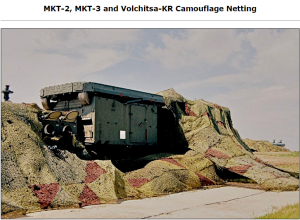
In Syria, VKS assets utilized MKT-2, MKT-3, and Volchitsa-KR camouflage netting that masked not only the presence of aircraft by electro-optical imaging satellites but also infrared satellites. This netting interweaves specific materials that decrease the thermal crossover with the surrounding terrain. VKS aircraft also have several onboard deception measures to ensure survivability in flight. For example, most modern Russian aircraft have a cocktail of radio frequency (RF) deflecting chaff and infrared countermeasures (IRCM). These cocktails defeat the sensors onboard IR, Semi-Active (SAR), and Active Radar (AR) missiles. Another option to defeat adversary systems through deception is towed radar decoys. These towed radar decoys emit the same RF signature as the towing aircraft. However, they can emit at a higher energy level to distract the sensor of a missile or assisting targeting radar.
The Air and Missile Defense Forces, under the VKS, also have several exquisite deception methods available to defeat advanced adversary systems. Like their Air Forces counterparts, the troops operating
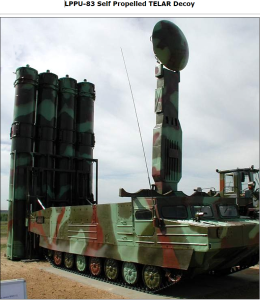
strategic and tactical SAMs have inflatable decoys to confuse adversary sensors. Mobile Air Defense Battalions can use inflatable Transporter Erector Launchers (TELs) to complement their batteries with low-cost “targets .”So, even if the battery is located and fired upon, their adversary will have difficulty ascertaining which TELs are real. In addition, decoys of ground-based SAMs are much more developed. For example, LPPU-83 Self-Propelled Transporter Erector Launcher and Radar (TELAR) Decoy is a fully operational tracked vehicle that mounts the expended tubes of an S-300V TELAR. So on EO/IR and SAR radar, it looks incredibly similar to an actual firing unit. There are also several false target emitters for tactical SAMs, such as the Almaz-Antey OU-1 Relocatable Decoy that supports the SA-8 GECKO by emitting the same RF signal that the onboard SAM radar uses to distract anti-radiation missiles (ARM).
During the 2022 invasion of Ukraine, U.S. intelligence officials recognized that Russian surface-to-surface launchers were using a new type of decoy. These decoys, painted with a distinguishable orange tailfin, are packed with electronics that emit similar signatures to the Iskander-M missiles. These decoys seek to throw off Ukrainian targeting radars to increase the survivability of the munitions. While these launchers, Iskander-M, do not fall under the VKS, the use of such decoys does suggest that they could be incorporated into SAM batteries of the Air and Missile Defense Forces, primarily since S-300 launchers are used in surface-to-surface mode.

Conclusion
The Russian Aerospace Forces serves the Russian Armed Forces as the armed wing that ensures air dominance. Through the Russian Air Forces and Air and Missile Defense Forces, the VKS employs advanced aircraft and SAMs. In keeping with the Russian doctrine of Maskirovka, the VKS seeks to employ advanced technological deception techniques that reduce their adversary’s capability to target, track, and destroy their forces. Russian aircraft rely on ground base inflatables, IR masking camouflage, IRCM decoys, and towed radar decoys to defeat adversary fires. Ground-based SAMs use RF-emitting decoys and inflatables to mask their actual firing units’ electronic signatures and locations to increase survivability. These capabilities are meant to counter the historical reliance of U.S. war doctrine on air power.

